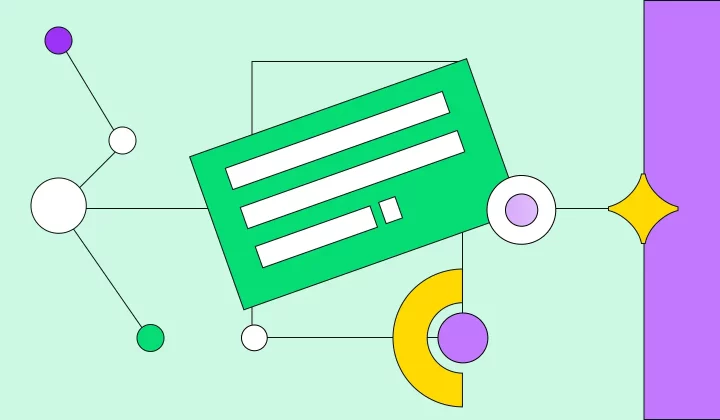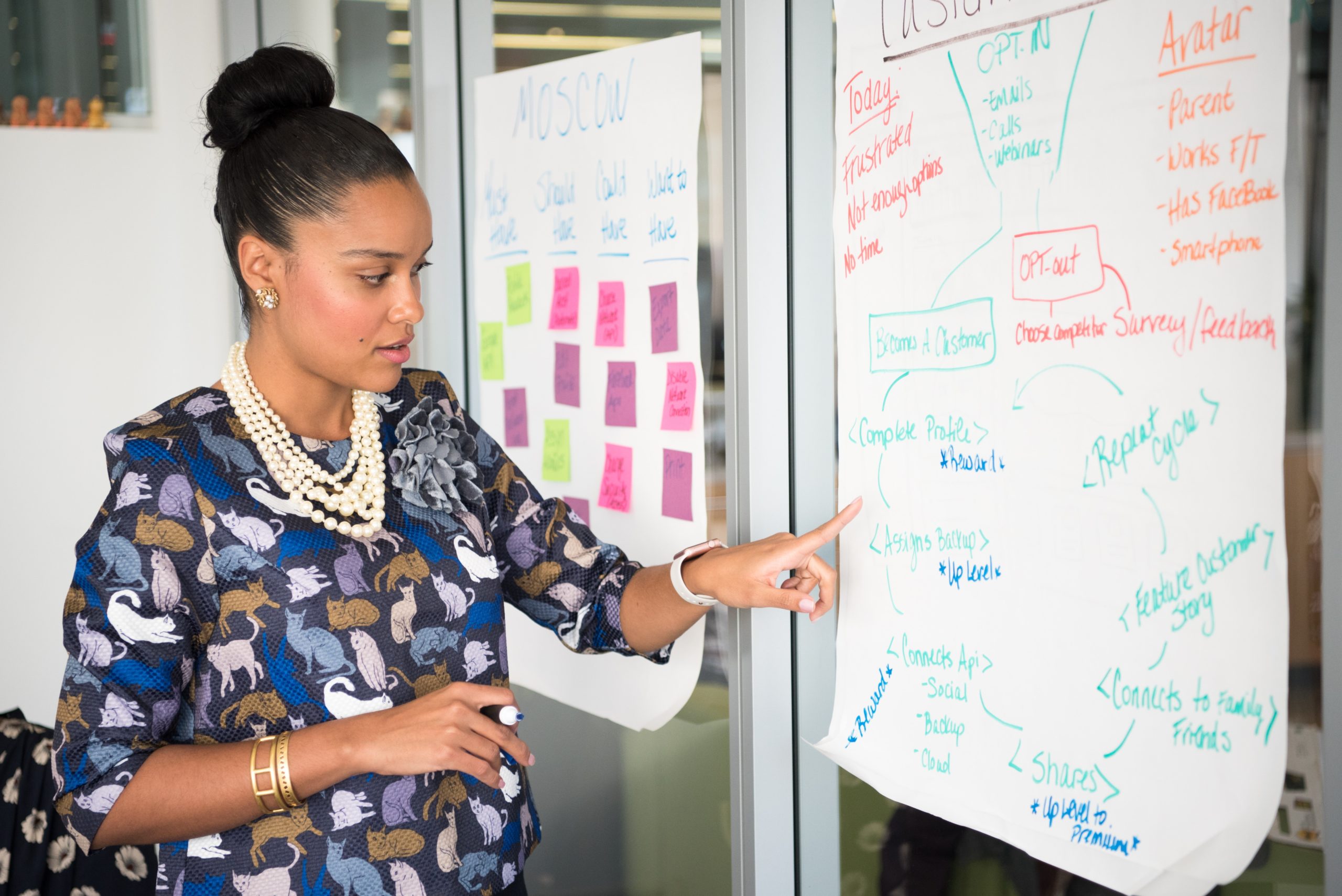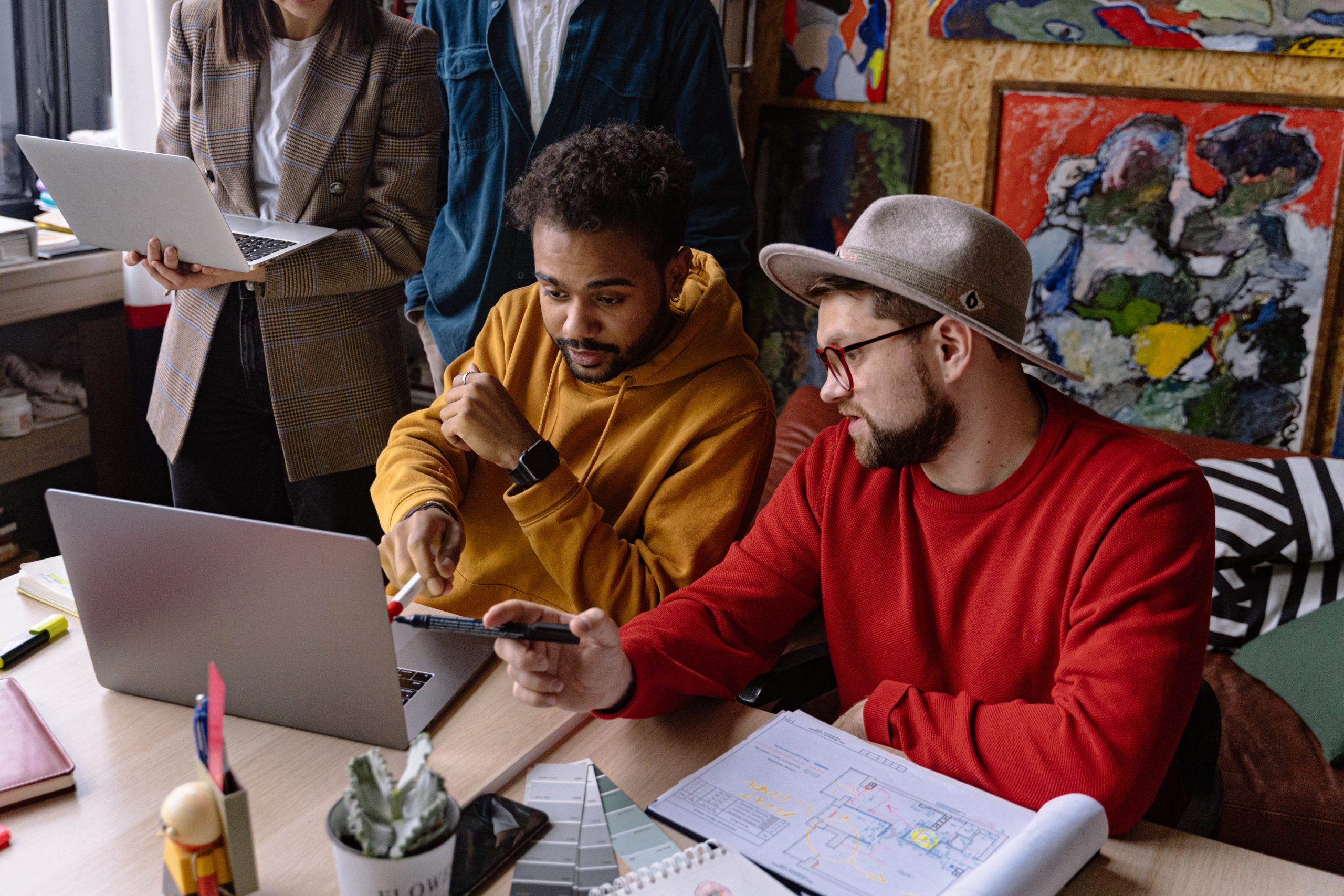Contents
No matter how good your portfolio or your work are, the interview is a key part of landing a great UX position. And it’s not only about making a good impression. Or about showing off your skills.

As a team lead, one of my responsibilities is taking part in the recruitment process. And it’s been quite an intense period for us in that sense. In the last year, together with our hiring manager and my colleagues, I have attended more than 75 final designer and researcher interviews.
I’ve been on good interviews and I’ve been on quite a few bad ones as well. Whenever I join an interview, I have high hopes for the candidate. I’m rooting for everyone who gets to this stage. And I can tell you there’s nothing more heartbreaking than seeing a good candidate do bad at this step.
So, here are some tips to help both UX designers and researchers nail their final interview.
How UX design recruitment works in UX Studio
If there’s one thing that anyone in UX knows, it’s that context is king. That’s why it would be unfair to offer these tips without explaining what our recruitment process looks like.
Our recruitment process starts with the application itself. Here, candidates have to submit their personal information, a link to their resume or their Linkedin profile and answer a few questions. For UX design positions, they also need to submit their portfolio.
If the candidates show potential, we reach out to schedule a quick online call to get to know them better. In this second step, we want to see if they are a match from a team perspective. Team fit is crucial for us – it’s the secret sauce for building a great team. That’s why it’s very important to see if candidates are actually a match.
If it’s a match, we send candidates a challenge they need to complete. Controversial as this may be, for us this is a necessary step to test the candidates’ skills. We’ve seen loads of pixel perfect portfolios from both junior and senior UX designers. However, the work on the challenge was showed a very different picture.
Once candidates submit their challenge, their work is evaluated by our designers or researchers. For both positions, we have clear guides and criteria for evaluation to make sure it’s not a matter of taste or preference.
If their challenge work is good, we invite candidates to a final interview. Up until this point, candidates are in touch mostly with our hiring manager. For the final interview, one of the two studio leaders joins, along with the designer or the researcher who evaluated the challenge.
All final interviews have the same structure. There’s a quick intro, challenge presentation and questions. And after this, the candidate can ask us any questions they might have about the company or the position. If everything goes well here, then we make the offer.
Like I mentioned in the beginning: both on an individual level, and on a team level, we’re always rooting for the candidates we interview. We really want to see them doing well. And it’s disappointing to see candidates with potential doing badly at this step.
So, here are some tips to help anyone with UX interviews.
10 tips for UX designer interviews
1. Share your motivation for becoming a UX designer
All tech-related fields have seen a boom in the past few years. UX, development, data science – a lot of people jump on the tech train, often mostly because of the promise of high salaries and sexy jobs.
Although money is important, we’re looking for candidates whose motivation goes further than the nice paycheck at the beginning of the month. UX is a field that comes with quite a few challenges. Difficult stakeholders, limited resources or stakeholders with a low UX maturity are some of the most common ones.
Without some intrinsic motivation, it’s very hard to deal with those challenges.
That’s why for me, it is very important to understand why some people choose UX. Especially if they come from other backgrounds, I want to understand what attracts them to this field. Seeing they have a personal motivation for getting into UX that’s deeper than money or hype is a bit of a reassurance that they’ll push through in a difficult situation.
On top of that, sharing your personal motivation is also one of the times when you can let your personality shine through a bit. One of the most memorable moments in an interview was when we asked a candidate why she wanted to do research. After pausing for a second, she asked us if we saw Pixar’s Soul. Then, she explained that for her, research is the same as music was for the main character in the film. The way the candidate explained her motivation definitely helped, but we also understood that she’s in it for the right reasons.
2. Share what courses you took in UX design & research

As a company, our policy is to value experience and motivation, regardless of background or education. Still, I have to say that having even a bit of education about UX can make a big difference. Even if it’s not formal education or even if it’s just one or two courses.
Any UX education you have should definitely go on your resume, that’s for sure. But it’s worth bringing these courses up a bit in final interviews as well. This can show that you have a good understanding of the basics, about what UX is and how it works.
Also, the people interviewing you can see that you’re taking an active part in developing both your skills and your career. This applies to both juniors and seniors.
3. Share your process

While design is about creating new things, it’s also about having a structured approach about it – especially when it comes to UX.
What anyone needs to see in an interview is that you have a process in place. UX is about finding relevant user problems, clarifying their context, and solving them. So whatever you’re presenting, whether it’s your portfolio or a take at home assignment, it’s important to share how you approached the task with your audience. And it’s very important for your audience to understand what problem you’re solving.
That’s not to say you have to stick to that process like glue. Also, it’s ok to adjust the process depending on circumstances, what’s doable and what’s not doable.
Overall, having a set of steps to follow shows that you’re systematic in your approach. And it’s important for recruiters, UX leads and hiring managers to see that you don’t just do things randomly.
4. Share the reasoning behind your UX decisions

Design is thinking made visual. Whether it’s in a portfolio or a take at home assignment, your visuals are on display at this stage. So, during a final interview, it’s important to share the thinking and the reasoning behind the decisions you made when creating the visuals.
I cannot stress enough how important this is. Or how often I’ve seen it missing.
I’ve seen plenty of candidates who made random decisions about their work. Odd colors without any connection to the task at hand, unnecessary features that didn’t bring any value for the user or the use case, features without clear functionality – I’ve seen these over and over again.
From my point of view, this is one of the things that separates the good designers from the not-so-good ones. The good ones have a strong reasoning and thinking in place. Through their work, good designers are able to create solutions for problems. They can also articulate how they solved those problems and why they made specific decisions. The not-so-good designers make random decisions based entirely on taste and preference. In their case, it’s something similar to throwing spaghetti at the wall to see if it sticks.
Also, strong reasoning and process go hand in hand. You need to show the people you’re interviewing what problems you faced, how you solved them, and why you made those decisions. How the elements connect with one another in a design, how they interact with each other – it’s very important to be able to articulate as a UX designer.
And that brings us to our next tip…
5. Work on your presentation skills
Presentation skills are very important for a UX designer, beyond the interview. Whenever you’re presenting your work, make sure to share the context and have a structure for your presentation.
Still, I was in plenty of interviews where candidates just jumped into the design, showing us the colors and the screens without any mention of the bigger context.
A good presentation always tells a story. There’s an introduction to what you worked on, followed by the main events, and then a small summary to synthesise. For UX designers, a good presentation also covers what problems you started from and how you solved them.
One important thing to keep in mind here is adjusting the level of detail. You don’t want to bore your audience by going into a lot of unnecessary details that don’t add a lot of value to the main goal.
And whenever you’re presenting, try to…
6. Be enthusiastic
While this might seem like a no-brainer, I’ve seen it often enough to know it’s worth mentioning. If you’re not enthusiastic about your work, your audience will get bored. And it’s hard to recover from that.
Some candidates presented their work like it was the last thing they wanted to do. In a dull, monotonous tone, with their head resting on their hand. In all those cases, we had to make an effort to follow them and not get distracted.
That’s not the way to do it.
Whenever you’re presenting your work, sit up straight, look into the computer. Not on the side, not into your second monitor. Have a warm, friendly tone, and don’t get lost in your own words. It’s ok to stumble here and there, but overall try to keep your audience engaged.
There is a good balance here to be kept in mind for sure. While you should be enthusiastic, don’t go over the top. With us, we’re probably going to appreciate that – we look forward to seeing the human side of people a lot whenever we do final interviews. However, that might not be true for other companies which are looking for a more formal outlook.
7. Be open to questions about your work

As I mentioned in our recruitment approach, during the final interview, we ask candidates questions about their assignments. And we’ve seen quite a few candidates change very quickly when they got questions about why they made specific decisions.
I don’t think any interviewer’s intention is to undermine their candidate’s decisions. On the contrary, getting questions is a good sign.
Also, at any level of your career, you should be open to questions about your work. Whether you’re working in a team or with people from different backgrounds, it’s natural to get questions about your design. At this point, you should also mention any resources you’ve used in your work like templates for example.
That’s why it’s of the essence that you don’t get defensive or irritated in this situation.
When a candidate gets annoyed about the questions regarding their work, that’s a telling sign that they might not be good with feedback. And that is problematic on a number of levels. First, feedback is essential for growing as a designer. And second, they might not be easy to work with.
If the question isn’t clear, ask for clarification. But try to address the questions openly and with a positive attitude.
8. Be to the point
This one goes hand in hand with the point above. If you’re lucky, in an interview, you will receive quite a few questions. Some will be about your background, some will be about your work. Sometimes these will be easier questions, sometimes they will be tougher questions. And other times, it can also be questions to challenge your reasoning.
Yet, with any questions you get, it’s important to be straight and to the point.
And I’m mentioning this because some candidates would go into a lot of detail – most if it irrelevant – telling a story to answer a question we asked. However, with all those details, it felt that they were evading the original question we had asked.
Answering the questions you get directly is crucial.
First, it shows that you understand the question, you know how to express yourself clearly and to the point. I cannot stress how important that is. Second, it keeps your audience engaged and it shows you’re a good communicator.
If you’re not comfortable answering a specific question, share that with your interviewer. If it’s a reasonable request, it shouldn’t be a problem.
But apart from that, try to address any questions you get directly and clearly. Whenever an interviewer asks a question, they’re usually looking for an answer. Not a diversion.
And if you don’t know something, it’s ok to…
9. Admit it when you don’t know something
This connects with the two points above.
No one expects you to know and answer everything. It’s actually better to admit it when you don’t know how to answer a particular question. When you’re desperately trying to answer a question without actually knowing the answer, the interviewers catch on. And they catch on fast.
Be open about the things you’re not sure of. Admitting you don’t know shows that you’re humble and honest – those are two qualities anyone should be looking for in a potential teammate.
10. Ask for feedback and be open to it

If there’s one thing that helps designers grow, that’s feedback. While we provide feedback to each candidate who makes it to the challenge round, it’s always a nice surprise when people ask us for feedback on the spot. For us, that’s a sign that they are looking to improve and become better at what they do.
So don’t be shy and ask for feedback on interviews. And listen to it without taking it personally.
However, try to be honest here. If you don’t actually want that feedback, don’t ask for it. Whenever there’s a mismatch between what you’re asking for and your reaction to the questions you get about your work, that is going to be visible pretty fast.
To summarise
Interviewing is probably the hardest part of landing a good UX position. Here are some things to consider and practice to get better at it:
- Share your motivation for becoming a UX designer
- Share what courses you took
- Share your process
- Share the reasoning behind your decisions
- Work on your presentation skills
- Be enthusiastic
- Be open to questions about your work
- Be to the point
- Admit it when you don’t know something
Back to you…
What other tips do you have for UX designer interviews? What worked well and what didn’t work well from your experience? Feel free to share your experience with us on our social media channels.




